5 Ways to Prepare Your Home Service Business for the AI Revolution
Get the tips, tools, and resources your home service business needs to prep for the AI revolution so you can stay ahead of the game.
Learn the pros, cons, and pitfalls of AI so your service business can know best practices to follow as well as what to watch out for.
When ChatGPT launched publicly in November 2022, it felt like the very bedrock of modern life shifted overnight. Suddenly, AI was everywhere, and now, it’s playing an integral role in shaping the future of business. It doesn’t matter what industry you’re in—AI will impact your work.
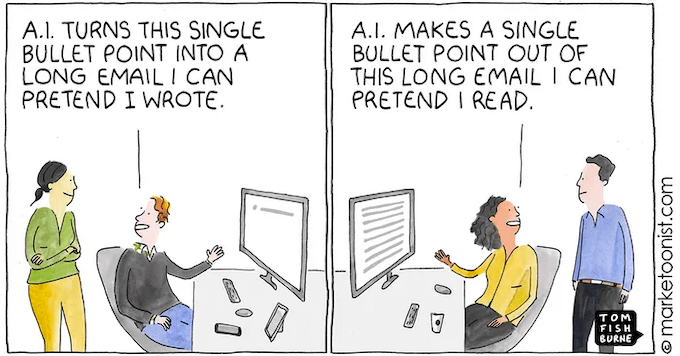
If you haven’t started exploring how AI can improve your business, now’s the time. But as with any emerging technology, you must do so with clear eyes and a level head.
That’s why in this post, we’re breaking down the pros, cons, and potential pitfalls of AI for service businesses so you can select the right tools to help you achieve your goals.
Why are people so excited about AI, anyway? They see its enormous potential to introduce new efficiencies into businesses across industries.
Here are four of the biggest potential pros for service businesses incorporating AI into their work.
Home services and home improvement are hands-on industries. The more administrative tasks you can automate, the more time you have to spend on the high-value work you’re uniquely qualified to do: talking to clients, connecting with prospects, and spending time on-site.
Let’s take email as an example. The average US worker spends nearly two-and-a-half hours every day answering work emails. Imagine if AI could reduce that time by even 10%. That would give you more than an hour back in each work week. Imagine what you could do with that time!
As you can see, even minor efficiencies introduced by AI can have a significant impact cumulatively.
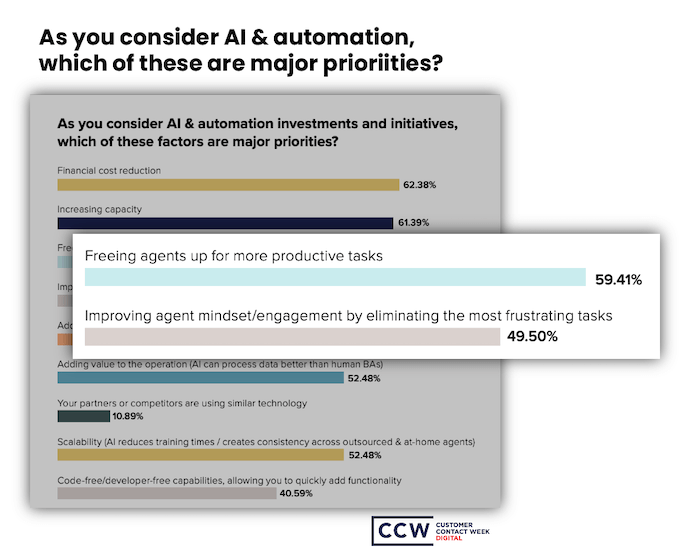
Fine-tuning your planning and estimation phases can help you boost your business margins.
Many tech providers are designing AI tools to help service businesses create more accurate estimates and improve the sourcing and bidding process. AI can empower you to quickly reach the correct conclusions and provide clients with the best options.
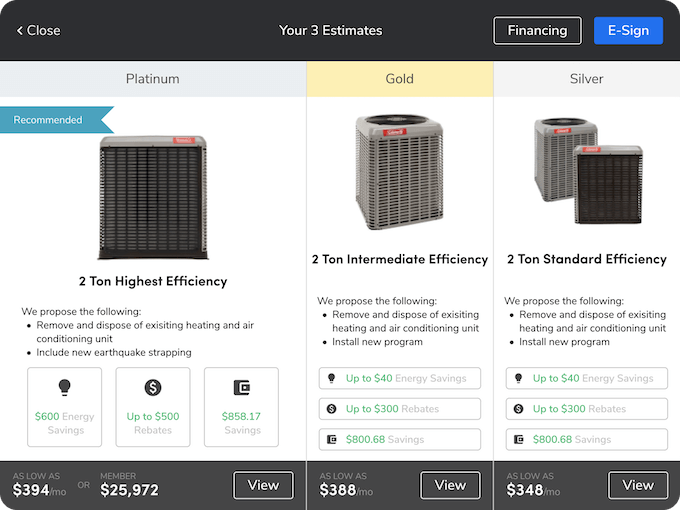
That increased efficiency has ripple effects. When you spend less time estimating and quoting each job, you have more time to invest in other business areas.
Everyone is excited about AI, so you need to be prepared to address AI in your contracting business. If you can demonstrate to clients that you’re on the cutting edge of AI-enabled technology, you can help your business stand out in a crowded marketplace.
Highlighting your use of smart home sensors that extend the life of systems and reduce repair costs, for example, offers a clear benefit for prospective clients.
Positioning yourself as an industry-leading provider also allows you to justify a higher price tag for your services. People are willing to pay a premium for cutting-edge solutions that boost their home’s value and make their lives easier.
You’re 900% more likely to get a response when you contact a lead within the first five minutes of them reaching out. That’s an incredible stat, but it’s also a difficult feat to manage when you’re responding to incoming messages manually. That’s where AI can help.
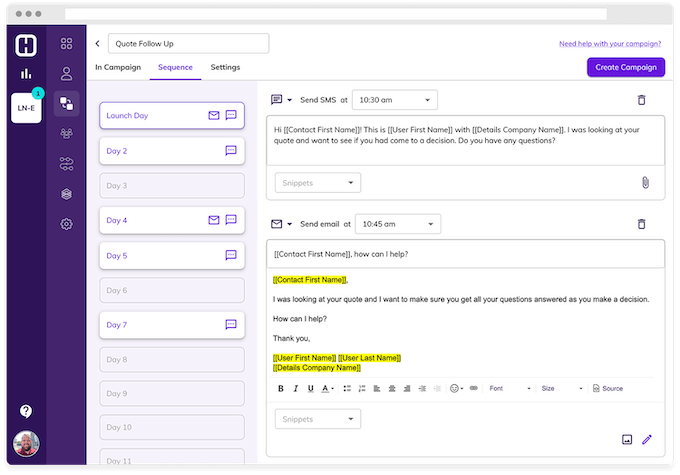
Rely on AI to automate that first outreach, so you’re the first provider prospective clients hear from. Once you're the first one to reach out, you'll notice an increase in responses. Typically, this would mean reps then have to deal with a sudden influx of responses, but if you have a bot to support them and keep up with every conversation, you can reap all the benefits of an increase in customer responses.
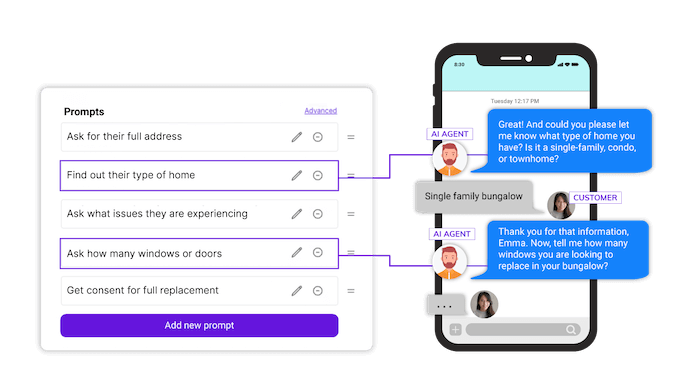
Bots can converse with customers to maintain lead engagement, giving you speed to lead and increased response rates with one solution. Give it a try here!
A professional follow-up strategy can help you close 15% more business, and AI can help you stay in regular contact with less manual work for your team.
Nothing in this world is perfect. That includes AI; there are some downsides to the technology that you should consider while evaluating potential solutions.
Your AI tool will have a price tag attached, but that’s not the only cost associated with the technology.
To successfully implement any new tool in your business, you must invest in education, training, and integration with your existing tech and workflows.
This will require you to spend some time and money upfront. Of course, once you make it over the training hump, there’s the opportunity for long-term returns. But you won’t get there without the proper investment at the start.
When considering what you can afford to spend on a new AI solution, be sure to budget for hidden implementation costs.
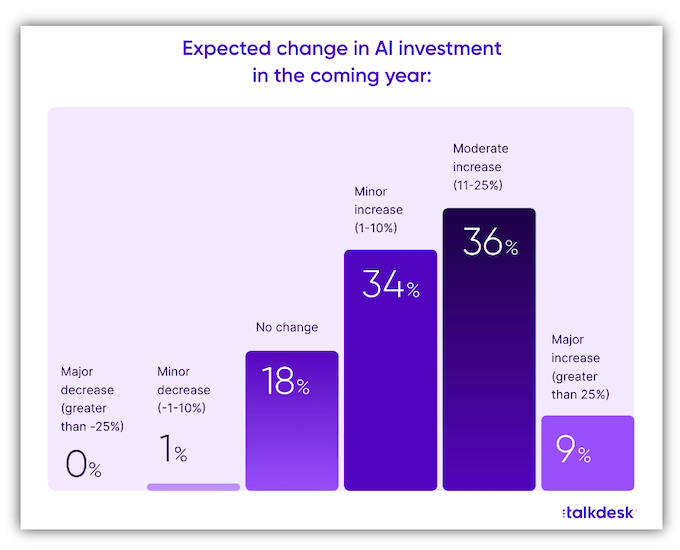
These upfront costs are about more than the money you spend on training and IT. It’s also about the short-term decrease in productivity your team will experience as they hit the AI learning curve.
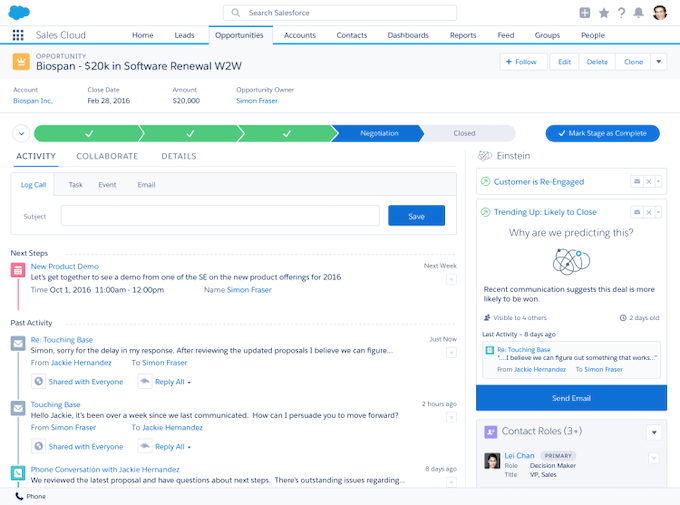
Introducing new AI solutions into existing workflows (like your CRM) will create a learning curve. Image source
The old way of doing things was fast because it was familiar. Your team will need time to gain proficiency with your new tool, which will introduce some short-term sluggishness into their workflow. You’ll also need to train new team members to use your specific AI systems.

Again, account for this learning curve (and the associated costs) when evaluating the all-in cost for a prospective AI solution.
Do you feel panicky when you’re away from your smartphone for too long? Of course you do—your whole life is on there! If you can relate, you understand technological dependency.
Once your new AI solution becomes vital to your work, have a plan to keep it working optimally. How will you maintain and scale your operations with AI alongside you? Consider working with the provider to see how the AI can scale with your business when vetting your AI tools.
How will you continue to keep your data secure? Do you have a means of evaluating opportunities for further integrations with your AI and other technology?
It’s also worth doing some due diligence before you commit to any AI vendor. This is still a nascent industry, and many are rushing in to compete in the space. Ensure you’re selecting a provider with staying power—and plan to store valuable data in a secure backup location so that you don’t lose everything if the tool goes away for any reason.
Any emerging field will have some unknowns. Even the AI experts in Silicon Valley are still trying to figure out how to answer some essential questions about how the technology works.
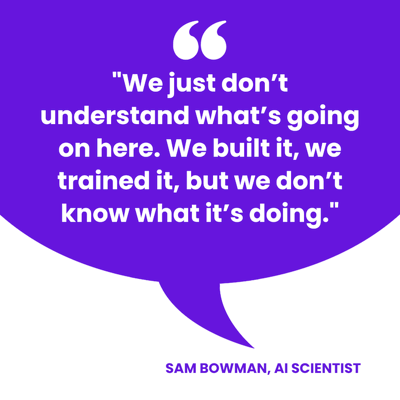
Just like you wouldn’t hand the keys to your home over to a stranger you just met on the street, you should take things slowly with AI. We humans are getting to know the technology and understand its trustworthiness.
You can invite the AI into your business, but don’t leave it alone there. You’ll still want to double-check its work until you understand its eccentricities and potential weaknesses better.
Outside of the obvious cons, certain realities can create challenges in the long-term success of your AI implementation. That’s what we’re calling pitfalls.
Even if you’ve selected a fantastic AI tool that fits your business, things can still go sideways if you fall into one of these traps. But knowledge is power, and educating yourself about potential issues is the first step to avoiding them.
Here are some of the greatest mistakes service businesses can make when implementing and using AI.
Did you know that 80% of consumers are more likely to do business with a company that personalizes? If you rely on an out-of-the-box AI solution without tailoring it to your business and clients, you’re missing out on its true value.
This is especially true when incorporating AI into prospecting and customer service workflows. Greeting prospects or clients with generic messaging is a major turn-off.
Instead, take the time to get to know your AI solution’s personalization capabilities. Then, invest in configuring the tool to suit your needs and deliver personalization at scale for your audience.
Have you heard the expression, “If something is free, you are the product?” That’s true with many technology solutions, and AI is no exception.
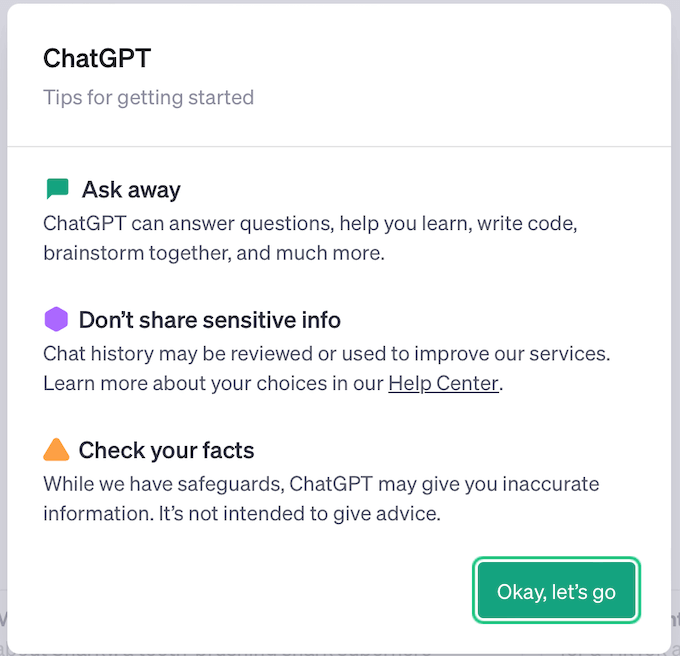
To its credit, ChatGPT doesn’t bury the lede—this warning about sharing sensitive info pops up when you log in.
Before you use any AI solution (paid or free), read the entire user agreement and privacy policy to understand how it will use the data you feed it.
Many free tools, ChatGPT included, warn you not to put confidential information into the system. ChatGPT uses data from customer prompts to train its AI further. If you put something secret in there, it becomes part of ChatGPT’s knowledge base, which could become visible to other viewers in future prompt responses.
Do not compromise sensitive business or client data by misunderstanding the terms surrounding your AI usage.
AI has the potential to streamline and simplify your work. But if your team doesn’t understand how, when, where, and why to use AI, you might be making things more complicated and (counterintuitively) introducing new inefficiencies.
When you select a new AI solution, proper implementation starts with educating your team about its functionality and purpose.
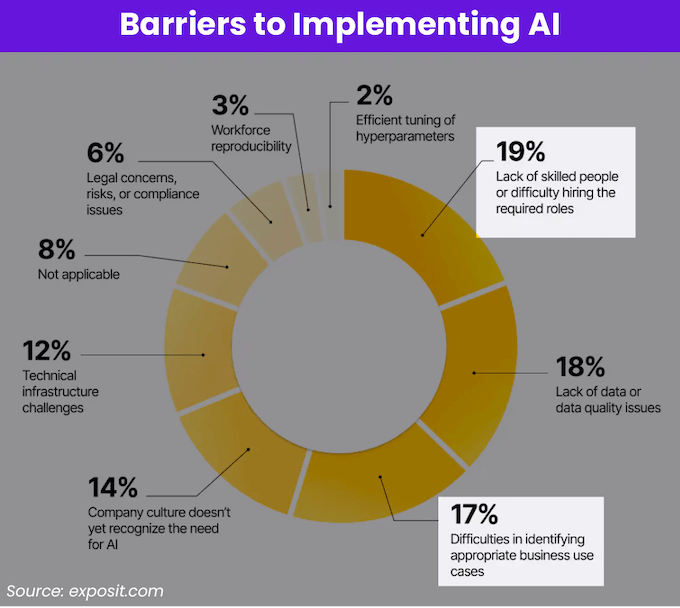
Properly equipping your team is the common theme in the top barriers to AI implementation. Image source
To maximize your efficiency, you must define how you want to integrate the tool into your business’s specific workflows and employees’ tasks.
Then, be willing to reassess how your team uses AI and adjust as the tool adds new features or your team discovers additional use cases. Remember, your employees who are using AI every day can be an invaluable resource in identifying new ways to leverage it—don’t be shy about asking them for feedback and suggestions!
When it comes to data, the truism “Garbage in, garbage out” exists for a reason.
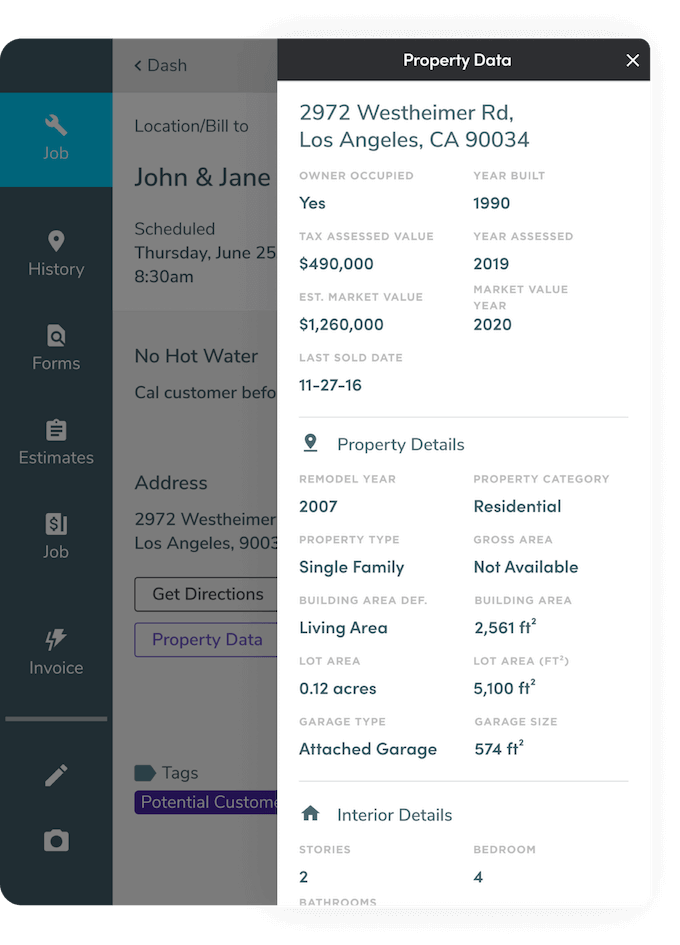
Data like this can be incredibly valuable, but only if it’s accurate! Image source
AI isn’t independently intelligent; it relies on you to feed it accurate, relevant information. If you give your AI tool incorrect, outdated data, it will return unhelpful outputs.
Part of a successful implementation process is ensuring the data you use is correct. You may be understandably excited to start using your new AI solution, but take the time to clean up your data before you dive in to ensure you’re maximizing the tool’s accuracy, efficiency, and overall value to your work.
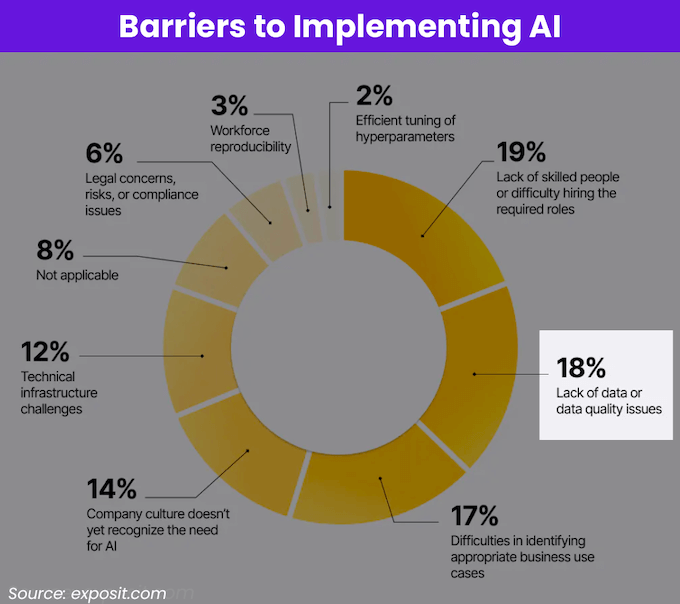
When evaluating a prospective AI solution, be sure to keep these pros, cons, and pitfalls in mind. They can help guide you to a tool that will address the specific needs of your business and introduce efficiencies as well as growth opportunities.
To recap, here are pros, cons, and pitfalls of AI for service businesses:
Get the tips, tools, and resources your home service business needs to prep for the AI revolution so you can stay ahead of the game.
Learn how you can optimize ServiceTitan for your HVAC company with tips to streamline your sales process, boost your ROI, and improve your brand.
Here are 19 dos and dont's for using Chat GPT for home improvement business marketing, operations, and customer communication—with prompt examples to...
Be the first to know about new sales and marketing insights to grow your messaging strategy with leads and customers.